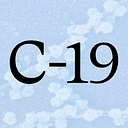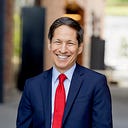PUBLIC HEALTH WEEKLY
What Matters Now Is Getting Vaccine Where It’s Needed Most
The latest Covid insights from former CDC Director Tom Frieden
The U.S. vaccination campaign is facing a fundamental challenge: getting the vaccine where it’s needed most. Millions of Americans are still unprotected, many of them at high risk of severe illness. Our fourth surge is beginning. Lives are at stake.
As reported by CDC in its Covid Data Tracker, one in three people in the U.S. have received at least one dose of vaccine — but that means two in three haven’t. Millions of people age 50–64 and 65+ who haven’t yet been vaccinated can still get Covid and are at much higher risk of severe illness or death, especially with rapidly increasing spread of new variants.
Some states are doing much better than others when it comes to reaching older people. New Hampshire, Vermont, Maine, Rhode Island, Connecticut, Massachusetts, and South Dakota have given at least one dose to more than 85% of their residents age 65 and older. But in Tennessee, West Virginia, Mississippi, Alabama, Hawaii, and Puerto Rico, that proportion is less than 70%.
More than 45 million at high risk
There are still 12 million people age 65 and older in the U.S. who remain unvaccinated. Nearly half of those between 50 and 64 have been vaccinated, but that leaves 34 million in that group who haven’t been. Those not yet vaccinated are disproportionately Black and Latinx. We must do better.
The most prevalent strain of Covid in the U.S. now is B117. This variant is more contagious and likely more deadly. How bad the fourth surge gets depends more on us than on the virus. Though we face a new variant, the same response is needed: vaccinate, mask, distance. This is time for patience, discipline, and solidarity.
In the coming weeks, we need to shift our strategy. It’s not enough for everyone to be eligible for vaccination, we have to make sure that people actually get vaccinated. That means reaching people at the highest risk of severe illness and death, and in the places with the most spread.
Aiming better
If we optimize vaccine distribution, we can save the most lives. I explained last week how a single well-targeted vaccination could save 10 times more lives, and prevent 100 times more cases, than vaccinating a low-risk person in a low-risk community.
The number needed to vaccinate (NNV) to save one life shows impact of vaccines in high- vs. low-risk groups. Vaccinating anyone helps, but for the next one to two months, focusing on the highest-risk populations can save many more lives. We need to aim our shots better.
There have now been about 560,000 Covid deaths in the U.S. That’s one of 586 Americans. To prevent one death we need to vaccinate 586 people a year. Vaccinating 100 million people will save more than 170,000 lives from Covid this year (many more when secondary cases prevented are included in the calculation).
This is even more dramatic when we look at nursing homes. Roughly 220,000 nursing home residents have died from Covid. To prevent one death, we need to vaccinate around seven nursing home residents, so vaccinating 1 million in this population alone will save 140,000 lives. Pretty amazing!
But focusing on age alone isn’t enough — we also have to improve vaccine equity by race and ethnicity. KFF data shows a consistent pattern: Black and Hispanic people are less likely to be vaccinated even though they’re more likely to get Covid and die from it.
A preprint study showed we can save many more lives if we prioritize high-risk areas rather than focusing solely on age.
Right now, Michigan is being hit hard. Other states may follow. As hotspots emerge, we should flood the zone with vaccines. We also need to continue to mask up and take other measures, such as closing bars and limiting indoor dining at restaurants until vaccine coverage increases or cases decrease.
Make vaccination easy
There’s a lot more we can do to improve equity and overcome vaccine hesitancy. Make it easy to get vaccinated, for one. Convenience overcomes reluctance. Instead of requiring appointments, let people walk in — especially those at high risk of severe illness who demonstrate that they live in places with extensive spread. Offer extended hours, allow time off from work, and provide transportation to vaccination sites. Make vaccines widely available at doctors’ offices. Provide translation and staff call centers.
Reach people where they are. That means getting creative with mobile and non-traditional vaccination sites such as churches, schools, corner stores, bars, and pop-ups at community events. Use the right messages and the right messengers. Partner with community organizations and leaders.
Ask your friends, family, and neighbors if they’ve been vaccinated. If they haven’t, ask if you can help them sign up, drive them to a vaccine clinic, or otherwise support the process. Listen to them and acknowledge their concerns, address these concerns with facts, and tell real stories of real people who have been harmed by Covid and those who are now protected by the vaccine.
We must do better with focused, rapid vaccination in the U.S. And we must recognize that global vaccine equity is an urgent crisis. Increasing manufacturing for the rest of the world is the only way forward. As long as the virus is still among us, it’s a threat to all of us.

